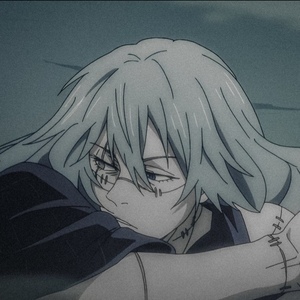29377432
Bitmap Graphics
Resource summary
Slide 1
Bitmap graphics, also called images or paint types, are graphics built by the computer in patterns of tiny dots and stored (bitmapped) as digital bits. As a desktop publisher, you’ll find that many of the graphics you work with are bitmapped, because many scanners, paint programs, and screen capture programs use this format.
The advantage of bitmap graphics is that they’re easy to edit, because graphic software programs can simply add, move, or delete the dots.
As this magnified image proves, bitmap graphics are actually made up of tiny squares.
The main disadvantage of bitmap graphics is that their edges appear jagged rather than smooth, especially when their size is increased (Figure 22). This is because the dots that make up bitmap images are actually square. These jaggies become more pronounced as image size is increased—even the high-resolution output of an imagesetter can’t hide them.
Three common formats for bitmap graphics are Tagged Image File Format (.TIF), Windows Bitmap Format (.BMP), and PC Paintbrush Format (.PCX). Other less commonly used bitmap file formats that you may come across include Computer Graphics Metafile (.CGM), Windows Metafile (.WMF), Windows Enhanced Metafile (.EMF), and WordPerfect Graphics (.WPG).
Bitmap Graphics
Slide 2
Tagged Image File Format, or TIFF, is the most commonly used graphics format. The electronic images produced by many brands of scanners are TIFF files, and both IBM and Macintosh computers can read them. Tagged Image File Format is a very versatile format, allowing a wide variety of resolutions and color (or grayscale) depths.
As you know, your computer organizes files in lists called directories. You can easily identify a TIFF file in a directory of your computer by the three-letter extension .TIF following the filename. This means that if you save an image under the filename balloons in TIFF format, the file will be listed in your computer’s directory as balloons.tif. In a similar way, if a client supplies a file called graphic.tif, you’ll know by its name that it’s in TIFF format. This format is so common that most desktop publishing programs can import and use TIFF files without converting them to another format.
Tagged Images File Format - TIFF
Slide 3
Unlike bitmap images, object-oriented (or vector) graphics are made up of whole objects, such as lines, arcs, circles, and boxes (Figure 23). Object-oriented graphics are also called vector graphics because they’re stored by the computer as mathematical formulas describing the objects that make up the image.
Object-oriented graphics are considered superior to bitmap graphics because the quality of the final image is dependent on the quality of the printer used. The higher the resolution the printer is capable of, the better the printed file will look. By comparison, bitmap images have a fixed resolution that isn’t improved by printing on a higher quality: If your bitmap is 300 dpi, it will print at 300 dpi, even when printed on a 2400 dpi imagesetter. Because an object-oriented graphic is actually a set of instructions to the printer describing a group of objects, it can be resized without loss of definition or distortion. Figure 24 compares the relative distortion of object-oriented and bitmap graphics. Notice that the lines in the object-oriented figure maintain their original smoothness as the image increases in size. In the bitmap image, these lines develop more jaggies as the image gets larger. The main disadvantage of object-oriented graphics is that the programs that use them are often more difficult to learn and use.
Three common formats for object-oriented graphics are Encapsulated PostScript (.EPS), CorelDRAW! (.CDR), and Adobe Illustrator (.AI).
Vector Graphics
Slide 4
Joint Photographic Experts Group Format (JPEG)
Joint Photographic Experts Group Format (.JPG) is the format of choice for large image files because it contains built-in compression. As you might guess, compression makes graphics files smaller. JPEG does this by organizing the file’s information in a highly economical order, while discarding the information that’s least important to the human eye. This can result in reducing the size of a graphics file down to less than one percent.
When saving a graphic in JPEG format, you can specify the degree of compression. If you use the highest level of compression, it may take a considerable amount of time to decompress the file when someone else goes to view it. Also, at high compression levels, the loss of image quality can be noticeable.
If you need to edit a graphics file that you’ve saved as JPEG, you must go back and edit your original file. That’s because resaving a JPEG file as JPEG will result in an additional loss of file data, which can cause the image quality to deteriorate.
Want to create your own Slides for free with GoConqr? Learn more.

